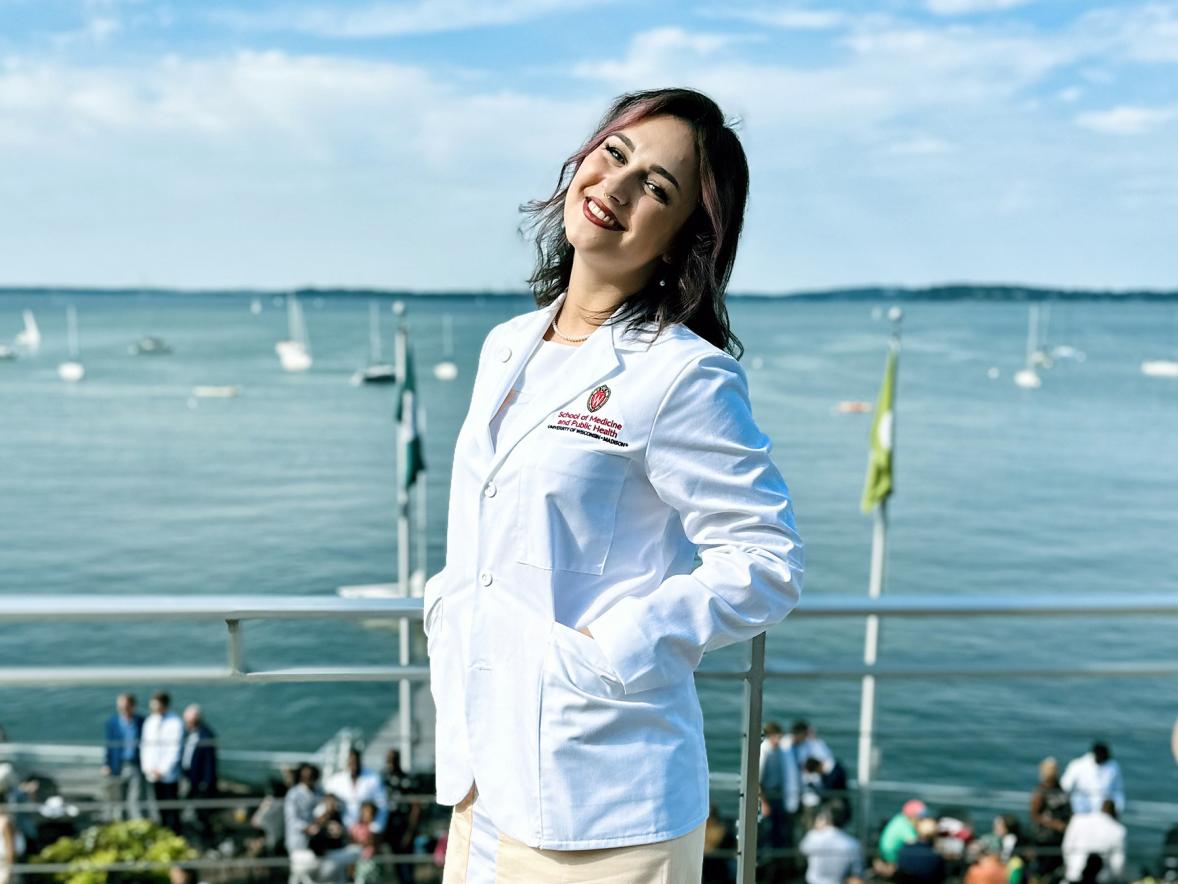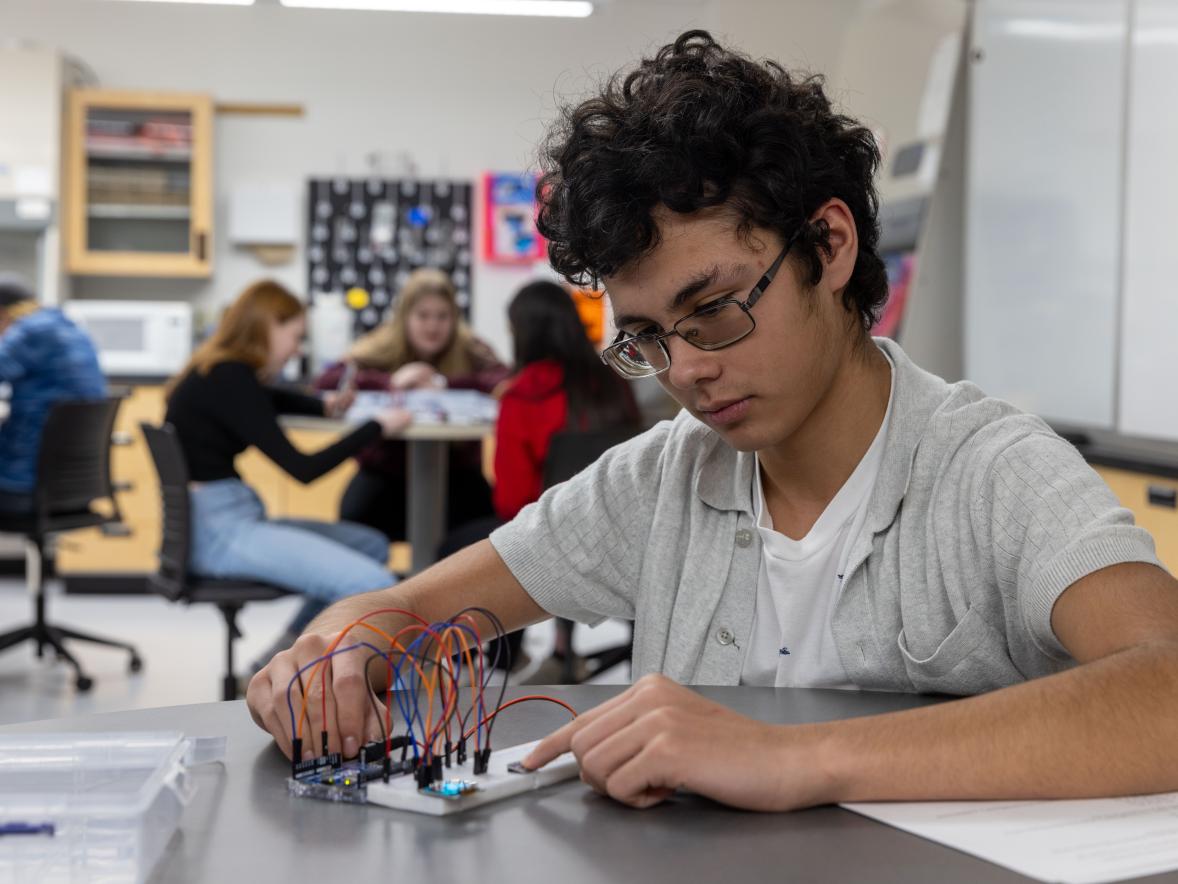Skål. Prost. Salud. Cheers. A toast to health. Six applied biochemistry and molecular biology students at University of Wisconsin-Stout recently helped to advance two projects using brewer’s yeast as a model organism in cancer research and as an ethanol source.
Ben Bryans, Eau Claire; Brian Matthews, Boscobel; Joshua Rusnak, Minneapolis; Tanner Thompson, Fall Creek; Andrew Wagner, Emerald; and Haydn Wyckoff, Minneapolis, completed their required experiential learning, working with Assistant Professor Brian Teague in Jarvis Hall Science Wing's Research Lab in June and July.
“Student research is one of the cornerstones of the ABMB program,” said Program Director Jim Burritt. “This type of interaction between a mentor and research students can be transformational in the students’ education and is strongly supported by our university.”
The potential in proteins
The MCA1 project was student-generated research. Bryans approached Teague about conducting mentored research in cancer and they decided to focus on the caspase protein known as MCA1.
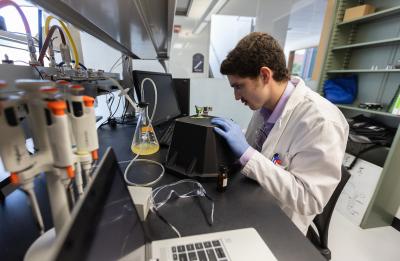
Caspase proteins are important in the development of multicellular organisms, like humans. Caspases also protect multicellular organisms from out-of-control cell growth such as cancer, in a process called programmed cell death, where cells purposefully die to protect the rest of the organism.
For example, explained Teague, skin cells peel off after a bad sunburn. “This is the outer cells on your skin sensing that their DNA has been damaged. Peeling off is better than the possibility that the cells would become cancerous,” he said.
Bryans finds the entire project interesting. “I believe that by understanding how caspases work in yeast, we can better understand how caspases work in humans,” he said.
Rusnak and Thompson joined Bryans on the MCA1 research team. But little is known about MCA1, itself. So, they used the lab’s standard tools, like incubators, centrifuges, thermocyclers, and gel electrophoresis equipment, to learn more about it. They also used a fluorescence microscope, as well as a flow cytometer and a NanoDrop spectrophotometer.
To better understand MCA1’s role in multicellular organisms, the team studied yeast, a single-cell organism. They are working to figure out when, where and under what conditions yeast cells make MCA1 and which other proteins it interacts with.
“This will give insight into programmed cell death and targeted cell therapies for cancer treatment,” Rusnak said. “It’s exciting to be working on something that could prove to be medically important or possibly progress cancer research.”
“I think there are a lot of exciting applications for gene modification in both humans and other organisms. This research project is helping me a lot to learn about biology and genetics,” Thompson added.
Why whey?
One day, Teague was chatting with biology Professor Steve Nold, who is collaborating with Curt Basina at Copper Crow Distillery in Bayfield to find a feasible way to turn cheese whey into distilled beverages, like vodka and gin.
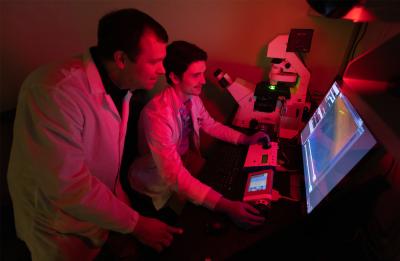
As brewer’s yeast can't ferment lactose, which is the primary carbohydrate in cheese whey, Basina has to use an expensive enzyme pretreatment, Teague explained. “I thought to myself, ‘What if we could create a strain of yeast that could use the lactose directly? There are other organisms that do it. In theory, it shouldn't actually be that hard. In practice, we will see.”
In the lab, Teague and ABMB students are building a set of DNA constructs to allow yeast to metabolize lactose and turn it into ethanol. Then, they will test small-scale fermentations to see how well the constructs worked. Ultimately, they'd like to try it at a commercial scale at Copper Crow.
“Producing vodka and gin from cheese whey would be a uniquely Wisconsin product,” Teague said. “This state produces a lot of cheese, and most of the whey from that production is discarded. A genetically engineered organism could make the distilling process easier, less costly and more sustainable.”
Ethanol is an important biofuel, and it is becoming more important as we turn away from oil and its climate impact, Teague added. “Ethanol is currently mostly made from corn. But there are plenty of other things we could be doing with that corn, like feeding livestock and people,” he said. “Cheese whey, on the other hand, is basically free.”
He calculated that if just 10% of the cheese whey produced in Wisconsin were turned into ethanol, the state would produce about as much ethanol as the entire country does annually.
The value of mentored research
The six student researchers range from sophomores to recently graduated, and their interests vary from medical school to pharmaceuticals to biology and biotechnology research. Teague believes the skills they gain in the lab and concepts covered in their courses are transferable across ABMB fields.
“Mentored research connects ideas from all over the curriculum,” he said. “It’s a fabulous context in which to develop mental connections. No matter where they end up, thinking critically about evidence and using it to make decisions is crucial.”
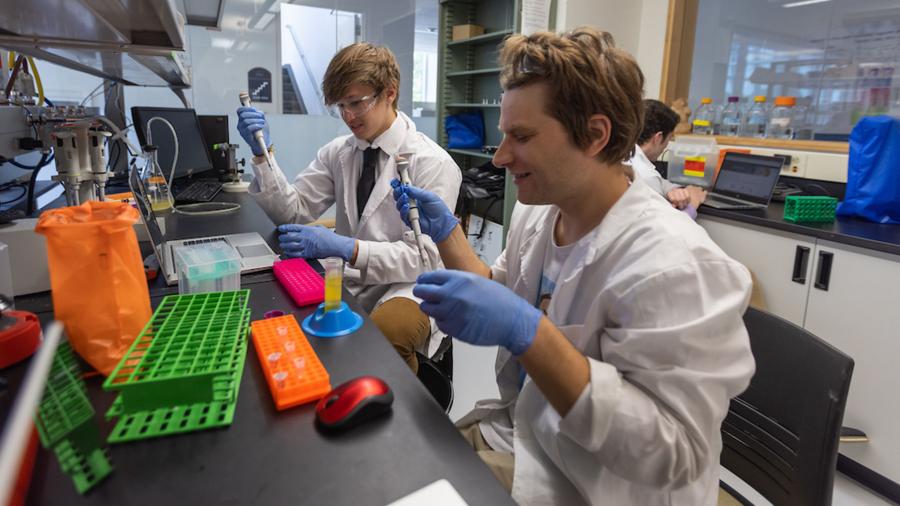
Rusnak, who’ll graduate in spring 2024, plans to pursue a Ph.D. in immunology and work in immunological research. The daily lab work gave him practice in techniques he’ll use in his career. “Mentored research offers challenges every day, and it’s a pretty exciting feeling when something you’ve been working on is successful and you get to share with others,” he said.
Bryans and Thompson will graduate in spring 2023. They both plan to go on to medical school; Bryans would like to be an oncologist and Thompson a physician. They both think their hands-on experience in the lab will help them with medical school applications and the entrance exam.
“I also think it helps me solidify my molecular biology and biochemistry knowledge,” Bryans said.
“The mentored research will help me a lot in my future studies and career since I am learning exactly what I want to learn,” Thompson added.
Teague thinks students often wonder how to get involved in faculty research on campus. “The answer is, ‘ask for it,’” he said. “It's not just biology. All of the faculty are doing research, and we love doing research with students.”
The prehealth pathways in ABMB can lead to careers and graduate studies in many medical fields, including dentistry, optometry, pharmacology, physical therapy and veterinary medicine. Faculty and staff advisers help students make curriculum and career decisions and can help with graduate school applications.





